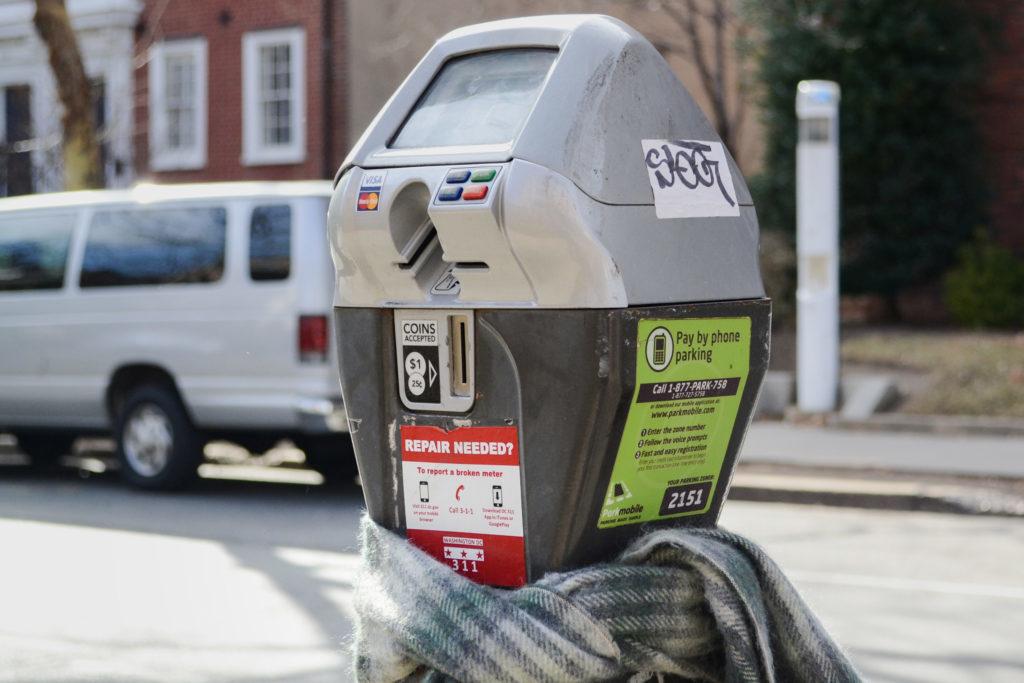Parking violations and faulty parking meters topped the list of maintenance requests in Foggy Bottom last year.
Foggy Bottom residents called in a total of 142 parking violations and 1,390 meter repair requests to a city-run maintenance hotline in 2017. Issues with roadway signs, the third most reported issue, generated 117 calls.
Less affluent areas of D.C. produced more calls for graffiti removal and sanitation issues than neighborhoods like Foggy Bottom, according to an analysis of city data, which experts should could stem from an unequal allocation of city resources.

Yonah Bromberg Gaber | Graphics Editor
Source: Open Data DC
Residents can contact the city through a 311 service, part of the D.C. mayor’s communication office, which allows residents to call in maintenance, assistance and information requests to fix issues from tree prunings to sanitation violations – in the community. The requests are typically then handed off to relevant city agencies to be addressed.
Erick Hines, the 311 spokesperson, didn’t return multiple requests to comment.
D.C. Department of Transportation spokesman Terry Owens said DDOT works with the 311 agency to flag issues of concern and process service requests, like maintaining roads, street signs, traffic signals, tree canopies, parking meters, alleys and public spaces.
“When questions that are service requests related to those areas come into 311, they are forwarded to DDOT for follow up,” he said. “We process those service requests in as timely a fashion as possible.”
Owens said DDOT is responsible for parking meter repairs and roadway signs associated with parking and traffic safety, but parking enforcement is under the Department of Public Works’ jurisdiction.
Foggy Bottom Association President Marina Streznewski said the 142 parking violation calls aren’t surprising because people park “stupidly” throughout the Foggy Bottom neighborhood, blocking driveways and sticking out on street corners.
The parking issues are more prevalent in Foggy Bottom because of the amount of events in the area, the large number of multi-family apartment complexes and narrow streets, she said.
“They don’t seem to remember that we’re part of a city that’s approaching 700,000 people,” she said.
Agencies responding to 311 requests create their own issues, she said. Departments like DDOT take a long time to follow up with calls, Streznewski added.
“There’s a three-step staircase that goes up into this ally that is broken and crumbling and dangerous and has been that way for years,” she said. “We don’t know when it’s going to be fixed.”
Hiroyuki Iseki, a professor of urban studies and planning at the University of Maryland, said Foggy Bottom’s issues with parking violations and meters match research about 311 calls he has seen at UMD.
Iseki said it isn’t surprising that parking was the number one complaint because many people gripe about parking-related issues. He said the revenue from parking meters and violations is a critical source of income for the city.
“Usually, the revenue is actually a surplus,” he said. “As long as the city can stand the complaints from the public.”
Iseki said D.C. is slowly upgrading to a new type of parking meter similar to a “vending machine,” where one services an entire block and will be more reliable than the conventional parking meters, which use outdated technology and frequently malfunction.
“The conventional parking meter was invented even before World War II, so you can imagine what kind of mechanical system that has been using,” he said. “It’s a very primitive and mechanical system and can be easily broken down.”
James Moore, a professor of urban planning and policy at the University of Southern California, said the number of calls to 311 could be linked to the city’s allocation of resources because the less money the city distributes to maintenance, the more issues and calls there will be.
“Sometimes the plan is going to be underfunded,” he said. “If there’s a budget to recall or a need to move some money from one activity to another to ensure that something higher profile or more urgent is funded, then sometimes maintenance is deferred. Parking meters included.”
Moore added that the high number of parking violations and faulty parking meter requests could be linked to the socioeconomic status of the Foggy Bottom neighborhood.
“It’s not unusual for a higher income residence to discover public authorities are more responsive to them,” he said. “They have the means to complain more vocally and broadly.”
Dani Grace contributed to reporting.





